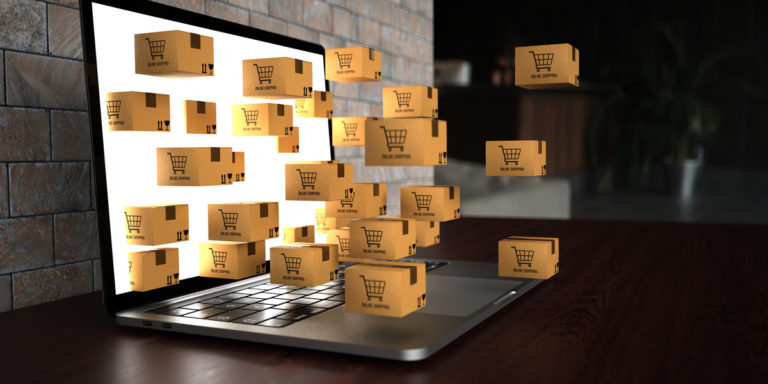If the past couple of years have taught us anything it’s that no one can really predict the future. It wasn’t long ago that experts were anticipating the rise of experience-led retail to save bricks and mortar stores. Then, boom – the pandemic hit, causing a shutdown like we’ve never seen before (and fingers crossed, won’t see again anytime soon!)
While there’s no crystal ball for knowing how eCommerce will pan out in 2022, we’re taking a stab at 5 of the delivery trends that we think we’ll be seeing a lot of next year.
1 - The Rise of Timed Delivery Slots
We’ve talked about how timed delivery slots are on the up and up, and we have a feeling that 2022 is the year that delivery expectation scales might tilt from speed to accuracy.
Royal Mail’s ‘Delivery Matters’ 2020 report showed that shoppers used next-day timed delivery an average of two times in the previous year. This was significantly less than standard shipping (eleven times in a year). Interestingly enough, 45% of those surveyed expect an estimated day or time of day for their orders to arrive, while 22% expect to be notified of a 3-4 hour window for delivery. Was this foreshadowing the need for timed delivery slots to be integrated into retailers’ online stores? Even with standard shipping, customers increasingly expect accuracy. Using timed delivery slots gives brands the power to keep up their end of the bargain while giving shoppers the power to choose a window of time that best suits them. Win-win.
2 - Sustainability Will Be at the Head of the Table
With 2022 pipped to be the year that eCommerce sales hit over a trillion dollars, making the industry more sustainable simply has to have a seat at the head of the table.
While there’s much more involved in becoming a greener business than tackling deliveries alone, there are plenty of actionable steps that retailers and brands can take to make shipping more sustainable – for example, offsetting emissions, optimising product pages, and offering more eco-friendly delivery options. Up to now, one of the biggest challenges for brands has been the fact that customers want to shop in a more sustainable way, but they don’t want to sacrifice convenience in the process. Next year, it will be interesting to see if brands can close this gap through education and offering options that actually enhance the customer experience rather than take away from it.
3 - Customised Packaging Will Fuel UGC
Shoppable content has been on the scene for some time now. More recently, however, shoppable UGC (user-generated content) has been proving to turbo-charge this already frictionless sales channel. Customer photos and videos provide the kind of social proof that consumers crave, with 79% of people saying that UGC highly impacts their purchasing decisions. Brands have a huge opportunity to make a statement and generate marketing opportunities with customised packaging. That might mean creating uniquely branded boxes or using recycled/reusable packaging that clearly states a brand’s commitment to sustainability. Either way, customised packaging can help improve customer experiences, which increases UGC and, ultimately conversions, and this loop is set to become even more popular in 2022.

4 - Shipping Costs Will Rise...Again
Experts are saying that the shipping crisis won’t come to an end until at least 2023. The supply chain has experienced a perfect storm, thanks to the pandemic, the China warehouse slowdown, and the Suez Canal traffic jam. Shipping container costs are due to rise by 30% next year. As a result, it’s left retailers with little choice but to increase their own product and/or shipping costs.
Honesty and transparency are going to have to play a vital role in tackling supply chain impatience amongst customers. Brands will also have to find new alternative ways to provide value to consumers if they want to attract and retain them – e.g personalised promotions, top customer service, or exclusive offers. Data is going to be critical for businesses to develop their sales strategy for 2022.
5 - Retailers Will Need to Get Serious About Returns
UK returns are predicted to grow by over 27% by 2023, costing retailers an estimated £5.6 billion. So will retailers start to take action to regain some control over the returns beast next year? As they already have to deal with skyrocketing supply chain prices, focusing on optimising returns presents an opportunity for brands to lower business costs. Luckily, there are many approaches that retailers can take to tackle returns – better product pages, minimising packaging, integrating AR into their online stores, etc.
Once again, education will also need to play a huge role in changing customers’ perceptions around returns, since 88% of consumers think that returns go back on the shelves and are resold to the next customer. Data also needs to lead the way in helping brands discover the ‘why’ behind their customers returns. A big focus should be on gathering intel from customers to improve product attributes and, in turn help shoppers get their purchases right the first time around.
Notice any common themes in the trends that we’re expecting to see next year? Data, experiences, and education – these are the threads that will help retailers and customers meet in the middle and shift perception around deliveries. Only time will tell, but 2022 is certainly looking like it will be another eventful year for eCommerce.
Talk to us today to see how we can help you stay ahead of delivery trends in 2022 and beyond.

AUTHOR
Michelle McSweeney Content Marketer
